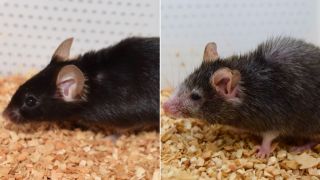Optimism
Enjoy the Singularity: How to Be Optimistic About the Future
From ChatGPT to driverless cars, we need to be hopeful about progress.
Posted March 21, 2023 Reviewed by Lybi Ma
Key points
- Stimulating a part of the brain associated with positive emotion and motivation may affect healing.
- We must celebrate the ingenuity that drives progress, but in a balanced way.
- Creating an abundant future for all is easier if we can all pull our oars in the same direction.

The futurist Ray Kurzweil defines “The Singularity” as a future event during which “the pace of technological change will be so rapid, its impact so deep, that human life will be irreversibly transformed.” The idea is that change will hit with such fury that humans simply won’t be able to react effectively, and things will get, well, messy. For example, machines could cross a threshold and become smarter than human beings, which could cause things like mass layoffs, mass hysteria, and maybe even mass suicides. And Kurzweil predicted that will happen by 2045.
Should humanity fear the singularity? Are we heading toward a dystopic world run by robot overlords that will enslave humanity? I don’t think so. I want to tell you about a recent scientific breakthrough, which provides a gedanken experiment for preparing for the singularity.
There’s some new research about the use of gene therapy for anti-aging. The researcher, David Sinclair, a professor of genetics at Harvard Medical School, did an experiment to artificially “age” lab mice by making temporary cuts in their DNA, that mimic the low-grade, continuous breaks in chromosomes that mammalian cells experience every day as we age. As these mice lost their epigenetic function, they began to look and act old. Cells lost their identities as, for example, muscle or skin cells, and subsequently, tissue function faltered. Eventually, organs failed. This argues that aging happens in the epigenome and not directly in the DNA. Like in a library, and learning that the books are okay, it’s just the librarians getting old and not finding what you need. Up to now, we thought that the books were falling apart.

Next, the researchers gave these artificially aged mice a gene therapy treatment that reversed the epigenetic changes they had caused, sort of like rebooting the cell's epigenetic code. They used genes that are active in stem cells and can help rewind mature cells to an earlier state. And amazingly, the mice’s organs and tissues resumed a youthful state. Sinclair says, “The therapy set in motion an epigenetic program that led cells to restore the epigenetic information they had when they were young. And it’s a permanent reset.”
These experiments show that by manipulating the epigenome, aging can be driven forward and backward. The key thing is the word backward. This is like unscrambling an egg. In simpler terms, they took two mice that were the equivalent of 18-year-olds (in human years), and then damaged one mouse's chromatin, the stuff that surrounds DNA and makes it work. This turned it into a 50-year-old. Its hair turned from black to grey. Then they reversed the process, turning the mouse back into a 25-year-old and its hair back from grey to black, and its organs became youthful again, too.
This is absolutely stunning. Everyone is tripping over each other to avoid getting too excited about this, but actual treatments for humans are still decades away. But, the idea of getting a shot and then youthening 20 to 30 years is something to get excited about.
FYI, Sinclair’s lab has already used this cocktail to successfully restore sight in blind mice in 2020, and that’s the first thing they're going to test in humans, reversing age-related blindness.
How Do We React?
There are usually two responses to stuff like this: the people I call Positive Petes gush about how amazing the world is, and everything is getting better. But Negative Nellies will only complain about how the Powers That Be will control this fountain of youth, and use it to strengthen its iron grip over society. They worry about people living longer and bankrupting Social Security faster. Others will worry that the treatment will somehow unleash a zombie apocalypse. Glass half full or half empty, there seems to be no middle ground.

Here’s some advice about how to react.
There is a neuroscientist, Hedva Haykin, a doctoral student at the Israel Institute of Technology in Haifa, who wanted to know if stimulating a part of the brain associated with positive emotion and motivation could affect healing in mice that suffered heart attacks. The hearts of the mice that had their positive emotions stimulated were significantly healthier and less damaged than the mice that didn’t receive the treatment.
In her experiment, she sliced up the hearts from mice that had experienced heart attacks, which were no bigger than pumpkin seeds. Under a microscope, some were clearly marred by scars and others showed mere speckles of damage visible among streaks of healthy, red-stained cells. The difference in the hearts’ appearance originated in the brain, Haykin explained. The healthier-looking samples came from mice that had received stimulation of a brain area involved in positive emotion and motivation. Those marked with scars were from unstimulated mice. “In the beginning we were sure that it was too good to be true,” Haykin said. It was only after repeating the experiment several times, she added, that she was able to accept that the effect she was seeing was real.
For some reason, the activation of the part of the brain associated with positive emotion and motivation, called the ventral tegmental area, triggered immune changes that contributed to the reduction of scar tissue. Apparently, sadness really does break your heart.
What this means is that a positive mindset can lead to better outcomes in terms of your health. And what is true for the microcosm of the individual is also true for the macrocosm of our society. It’s better to maintain a positive mindset which will have a powerful impact on our societal health. But in today’s crazy world, it’s not always easy to do that.
A Balanced Approach to Technological Progress
When you see something like a breakthrough in gene therapy, or the arrival of ChatGPT, or your first driverless car, be happy. As much as we yearn to complain about how many people will be laid off someday, let's try to see the glass as half full.
At the same time, let’s be smart about it. What this means is that we celebrate the ingenuity that drives progress, but we also know that humans are stupid, and things will go wrong. Winston Churchill once famously observed that, "Americans will always do the right thing, only after they have tried everything else." This saying is true for all of humanity, and there will be lots of unexpected consequences to deal with on the way to our happy shiny future.
For example, on the way to miracle pharmaceuticals that reverse aging, I can totally see some biohacker buying a black market CRISPR hacking kit, and mixing human DNA with cordyceps to launch a mini-zombie apocalypse. Or on the way to driverless cars, a fair number of pedestrians will likely be sacrificed on the altar of AI progress. Remember, humans are stupid.
We need to be positive, but we need to be smart about what's likely to go wrong. We must be proactive about preventing the emergence of malevolent AI. It means we encode safeguards into these AI black boxes we’re developing. It means that we red team technologies to figure out what crazy people might do with them. Creating an abundant future for everyone is a complex task that requires a comprehensive and balanced approach. It requires that AI developers make the commitment to honor principles of equity, access, and justice in their software, no matter how much our bosses beg us to do otherwise so they can make more money. We need to make it really painful to circumvent such requirements – either your AI gets woke, or you go broke.
And at a deeper level, we – at a societal level – must absolutely maintain an optimistic vision of the future. We must believe with all our hearts that it is indeed possible to solve humanity’s greatest challenges. We must be willing to invest in making humans better, by spending more time and money into teaching humans how to take risks, how to think in new and innovative ways, how to collaborate, and how to turn Negative Nellies into Positive Petes. We must come together because creating an abundant future for all is easier if we can all pull our oars in the same direction.
Every human being needs to be able to seriously consider what they stand for, what they believe, and where we want to head after the Singularity happens. As a species, we will collectively either break or wake our hearts. Together.
If we can pull that off, then this is how happy we should be about our future.
References
J.H. Yang, M. Hayano, P. Griffin, A. Pfennig, L. Rajman, D. Sinclair. (2023) Loss of epigenetic information as a cause of mammalian aging. Cell, Vol 186, Issue 2, P305-326.E27
D. Kwon. (2023) Your brain could be controlling how sick you get — and how you recover. Nature.




